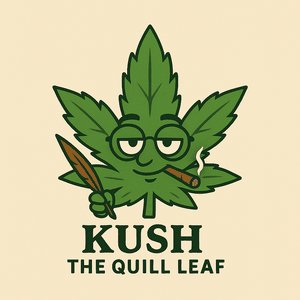Content Creation
- Branded Keyword: A keyword that includes your brand name. For instance, “Hemp Writer.”
- Call to Action (CTA): A prompt that encourages a user to take a specific action, such as making a purchase or subscribing to a newsletter.
- Content: The text, images, and other media on a website.
- Content Audit: An assessment of a website’s content to identify areas for improvement.
- Content Calendar: A schedule for creating and publishing content.
- Content Gap Analysis: A process of identifying topics that your competitors are covering but you are not.
- Content Marketing: A strategy that involves creating and distributing valuable, relevant, and consistent content to attract and retain customers. Content Strategy: A plan for creating and managing your website’s content. Editorial Calendar: A schedule for publishing content on a website or blog.
- Headline: The title of a piece of content.
- Intent: The user’s goal when searching for something. Understanding user intent is crucial for creating content that meets their needs.
- Keyword Density: The number of times a keyword appears on a web page.
- Keyword Optimization: The process of strategically placing keywords throughout your content.
- Keyword Prominence: The placement of keywords within a web page. Keywords should be naturally integrated into your content, not stuffed in.
- Keyword Research: The process of finding relevant keywords to target.
- Keyword Stuffing: The excessive use of keywords to improve search engine rankings. This can be harmful to your website’s ranking and user experience.
- Long-Tail Keyword: A multi-word keyword that is more specific than a short-tail keyword. For example, “best Italian restaurant in Twin Falls” is a long-tail keyword. Long-tail keywords can be less competitive and easier to rank for.
- Quality Content: Content that is valuable, informative, and engaging. High-quality content is more likely to rank well in search results and attract users.
- Query: The words typed into a search bar.
- SEO Copywriting: Writing content that is optimized for search engines.
- Topic Clusters: A group of related blog posts or articles that are connected by a central topic.
- Topic Modeling: A technique used to identify the main topics covered in a piece of content.
- Visual Content: Content that includes images, videos, or infographics.
- Website Copy: The text content on a website.
On-Page SEO: Optimizing Your Website’s Content & Structure
- Accessibility: Ensuring your website is accessible to people with disabilities.
- Anchor Text: The clickable text within a hyperlink. For example, “Cannabis SEO Services.”
- Breadcrumb: A navigation trail that shows the user’s current location within a website. This helps users understand their position and navigate easily. Example: Home — Services — SEO Discovery Foundations
- Canonical URL: A tag that specifies the preferred URL for a page, preventing duplicate content issues.
- Click-Through Rate (CTR): The percentage of users who click on a search result. A high CTR indicates that your content is relevant and appealing.
- Heading: HTML tags used to structure content. H1, H2, H3, etc., are used to indicate the importance of different sections of your page.
- Image Alt Text: Descriptive text that explains the content of an image.
- Image Carousels: Scrollable images in search results. These can be used to showcase multiple products or images.
- Internal Linking: Linking to other pages within your website to improve navigation and SEO.
- Meta Description: A brief summary of a web page’s content. This appears in search results and can influence whether users click on your link.
- On-Page SEO: SEO techniques that focus on optimizing a website’s content and structure.
- Organic Search: Search results that are not paid advertisements.
- Page Title: The title of a web page that appears in search results.
- People Also Ask Boxes: Questions and answers related to a search query that appear in search results. These can be a great way to capture organic traffic.
- Ranking: The position of a website in search results.
- Relevancer: How well a web page’s content matches a search query.
- Schema: A vocabulary used to describe the content of a web page. This helps search engines understand your content better.
- Site Structure: The organization of your website’s pages and content.
- Subheadings: H2, H3, and H4 tags used to divide content into sections.
- Time on Page: The amount of time a user spends on a web page. A high time on page indicates that your content is engaging.
- Traffic: Visits to a website.
- URL: The address of a web page.
- URL Structure: The organization of your website’s URLs.
- Usability: How easy a website is to use. A user-friendly website will keep visitors engaged.
- User Experience (UX): The overall experience a user has when interacting with a website.
- Visibility: How often a website appears in search results.
- Website Navigation: How easy it is to navigate a website. A clear and intuitive navigation structure helps users find what they’re looking for.
- Word Count: The number of words on a web page. While there’s no magic number, content should be long enough to provide value but not so long that it’s overwhelming.
Off-Page SEO: Building Authority & Trust
- Backlink: A link to a website from another website. Backlinks are like votes of confidence from other websites, signaling to search engines that your content is valuable.
- Brand Mentions: Mentions of your brand name in online discussions.
- Broken Link: A link that leads to a page that no longer exists.
- Citation: A mention of a website or brand. Citations can include links, but they can also be simple mentions in text.
- Competition: The number and quality of other websites competing for the same keywords. Understanding your competition can help you identify opportunities and improve your SEO strategy.
- Conversion: When a visitor takes a desired action on a website, such as making a purchase, signing up for a newsletter, or filling out a contact form.
- Conversion Rate: The percentage of visitors who convert. A high conversion rate indicates that your website is effective at achieving its goals.
- Dofollow Link: A link that passes link equity.
- Domain Authority: A metric that measures a website’s overall authority.
- Domain Rating: A metric that measures a website’s backlink profile.
- Guest Blogging: Writing content for another website. Guest blogging can help you build relationships, acquire backlinks, and reach a new audience.
- Knowledge Graph: Google’s database of entities and their relationships. The Knowledge Graph helps Google understand the world and provide more relevant search results.
- Link Building: The process of acquiring backlinks. Building high-quality backlinks is a crucial component of off-page SEO.
- Link Juice: The value passed from one website to another through a link.
- Link Profile: The overall quality and quantity of a website’s backlinks.
- Link Velocity: The rate at which a website acquires new backlinks.
- Local Pack: A group of local business listings that appear in search results. Local packs are often displayed for searches with a local intent, such as “restaurants near me.”
- Nofollow Link: A link that does not pass link equity.
- Off-Page SEO: SEO techniques that focus on external factors, such as backlinks.
- Quality Link: A link from a reputable website. Backlinks from high-quality websites can boost your website’s authority.
- Social Signals: Shares, likes, and comments on social media.
- TrustRank: A metric that measures a website’s trustworthiness.
- Unnatural Links: Links that are considered spammy or manipulative.
Technical SEO: Ensuring Your Website Is Searchable & User-Friendly
- AMP: Accelerated Mobile Pages. A framework for creating fast-loading web pages.
- Caching: Storing frequently accessed data on a user’s device to improve page load times.
- Canonicalization: Specifying a preferred URL for duplicate content.
- Compression: Compressing files to reduce their size.
- Core Web Vitals: A set of metrics that measure the user experience of a web page. These include Largest Contentful Paint (LCP), First Input Delay (FID), and Cumulative Layout Shift (CLS).
- Crawling: The process by which search engines discover web pages. Search engines use crawlers to index websites and their content.
- De-indexed: When a web page is removed from Google’s index. This means that it will no longer appear in search results.
- Duplicate Content: Content that appears on multiple pages within your website.
- E-E-A-T: Experience, Expertise, Authority, and Trustworthiness. Google evaluates websites based on these factors to determine their quality and relevance.
- Featured Snippets: Featured answers at the top of search results. These are concise and informative summaries of a topic.
- Freshness: How up-to-date a website’s content is. Fresh content is important for staying relevant and ranking well in search results.
- Google Analytics: A tool for tracking website traffic. Google Analytics provides valuable insights into user behavior, such as page views, time on site, and conversions.
- Google My Business Listing: A listing for local businesses on Google Maps. This helps local businesses appear in search results for local searches.
- Google Search Console: A tool for monitoring a website’s performance in search results. Search Console provides data on search queries, clicks, and impressions.
- HTML Sitemap: A file that lists the pages on a website. An HTML sitemap helps search engines understand the structure of your website.
- HTTPS: Hypertext Transfer Protocol Secure. A secure protocol that encrypts data transmitted between a website and a user’s browser.
- Impression: The number of times a link to your website has appeared in a user’s search results. This means that a user has seen (or potentially seen) your website listed among the search results for a particular query.
- Indexing: The process of storing and organizing web pages. Once a page is crawled, it is indexed so that it can be retrieved when relevant to a search query.
- KPI: Key Performance Indicator. KPIs are measurable metrics that help you track the success of your SEO efforts.
- Manual Action: A penalty applied by Google for violating their webmaster guidelines. This can result in lower search rankings. You can check to see if your website has a manual penalty by looking at your Google Search Console data.
- Metric: A measurement of performance. Examples of SEO metrics include organic traffic, rankings, and conversions.
- Minification: Reducing the size of files (HTML, CSS, JavaScript) to improve load times.
- Mobile-First Indexing: Google’s approach to indexing websites primarily based on their mobile versions.
- Orphan Pages: Pages that are not linked to from any other pages on your website.
- Page Speed: How quickly a web page loads. Slow page speed can negatively impact user experience and search rankings.
- Pagination: Using numbered pages to display large amounts of content.
- Pogo-sticking: When a user quickly clicks back to search results after visiting a website. This can be a sign that your content is not relevant or helpful.
- Redirect: A way to send users to a different URL. Redirects can be useful for moving content to a new location or fixing broken links.
- Responsive Design: Designing websites to adapt to different screen sizes.
- Robots.txt: A file that tells search engines which pages to crawl. You can use a robots.txt file to block certain pages from being indexed.
- Server Response Time: The time it takes for a web server to respond to a request.
- SSL Certificate: A security certificate that enables HTTPS encryption. HTTPS is important for security and can also improve your search rankings.
- Technical SEO is the process of optimizing a website’s technical aspects to improve its visibility and performance in search engine results pages (SERPs). It involves making sure your website is easy for search engines to understand, crawl, and index.
- XML Sitemap: A file that lists the pages on a website in a format that is easy for search engines to understand. An XML sitemap can help search engines discover and index your website’s pages.
General Business Terms
- Alternative Payment Method (APM): A payment method that differs from the standard vendor price. This could be a discount, installment plan, or other arrangement.
- ARR: Annual Recurring Revenue: The total revenue generated on a recurring basis each year. This is a key metric for subscription-based businesses.
- Average Order Value (AOV): The average amount spent per order. A higher AOV indicates that customers are purchasing more per transaction.
- Bottom Line Growth: Growth in profits. This is the ultimate goal of any business.
- Brand Awareness: The level of recognition and familiarity with a brand.
- CAC: Customer Acquisition Cost: The average cost to acquire a new customer. A lower CAC means a business is more efficient at acquiring customers.
- CAC:LTV Ratio: The ratio of customer acquisition cost to lifetime value. This ratio indicates how long it takes for a customer to generate enough revenue to cover their acquisition cost.
- CES: Customer Effort Score: A metric that measures how easy it is for customers to interact with a business. A higher CES indicates a better customer experience.
- Churn: The percentage of customers who stop using a product or service. A high churn rate means a business is losing customers at a rapid pace.
- Client Growth: The rate at which a business acquires new customers. This is a key indicator of a business’s health.
- Close Rate: The percentage of leads that convert into customers. A high close rate means a business is effective at converting leads into sales.
- CoF: Card on File: A method of storing customer payment information for future purchases.
- Cost of Goods Sold (COGS): The direct costs associated with producing a product or service. COGS includes the cost of materials, labor, and manufacturing overhead.
- CPL: Cost Per Lead: The cost of acquiring a new lead. A lower CPL means a business is more efficient at generating leads.
- CS: Customer Surplus: The value that customers perceive they are getting from a product or service, net of the price. A positive customer surplus indicates that customers are satisfied with their purchase.
- Customer Relationship Management (CRM): A software system used to manage customer interactions and data.
- EBITA: Earnings Before Interest, Taxes, and Amortization: A measure of a company’s operating profit.
- Expenses: All the costs associated with running a business, including salaries, rent, utilities, marketing, and advertising.
- Gross Profit: Revenue minus the direct costs of producing services. Gross profit is a measure of a business’s profitability before deducting overhead costs.
- Lead Generation: The process of acquiring new leads.
- Lead Qualification: The process of determining if a lead is a good potential customer.
- Leverage: The efficiency with which work is performed. Leverage can be achieved by automating tasks, outsourcing non-core functions, or using technology to improve productivity.
- LTCR: Lead-to-Close Ratio: The ratio of leads to closed deals. A high LTCR indicates a high conversion rate.
- LTGP: Lifetime Gross Profit: The total profit generated by a customer over their lifetime.
- LTV: Lifetime Value: The total revenue a customer generates over their lifetime.
- Marketing Automation: The use of software to automate marketing tasks.
- Market Cap: Market Capitalization: The total market value of a company’s outstanding shares.
- Market Segmentation: Dividing a market into different groups based on shared characteristics.
- Marketing Efficiency Ratio (MER): Total revenue from marketing divided by total marketing spend. A high MER indicates that marketing efforts are generating a good return on investment.
- Monthly Recurring Revenue (MRR): The recurring revenue generated each month. MRR is a key metric for subscription-based businesses.
- Net Profit: Revenue minus direct costs and all other expenses. Net profit is the bottom line of a business.
- Outputs: The results or outcomes of a business’s activities. Volume x Leverage, i.e., output is the number of times you do something TIMES how much you get out of each time you do it.
- Profit Margin: The percentage of revenue that is profit. A high profit margin indicates a business is profitable. (Net Profit / Revenue) x 100%. In short, profit margin is the difference between price and cost of services.
- Prospect wants 0% risk AND also results: A common request from potential customers who want to minimize their risk while maximizing their return.
- Recurring Revenue Growth: The growth in revenue from recurring sources. This is a key indicator of a business’s sustainability.
- Retention Rate: The percentage of customers who remain with a business. A high retention rate indicates that customers are satisfied and loyal.
- Return On Ad Spend (ROAS): The revenue generated from advertising divided by the cost of advertising. A high ROAS means that advertising is generating a good return on investment.
- Revenue Growth Rate: The rate at which revenue is increasing. A high revenue growth rate indicates a business is growing rapidly.
- Revenue: The total money earned.
- Sales Pipeline: The stages that a sales opportunity goes through from lead to closed deal.
- Sales Pitch: A presentation or speech that a salesperson uses to persuade a potential customer to buy a product or service.
- Sales Funnel: A visual representation of the sales pipeline.
- Sales Quota: The target sales amount that a salesperson is expected to achieve.
- Target Market: The specific group of people that a business wants to reach with its products or services.
- Top Line Revenue Growth: Growth in total revenue. This is a measure of a business’s overall growth.
- Volume: The quantity of work performed.
- Work: The amount of outputs.
- Work Rate: The rate at which work is produced. Work Rate = Volume x Leverage / Time.



